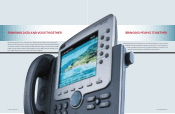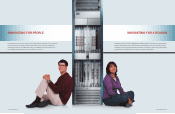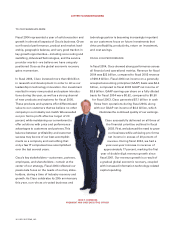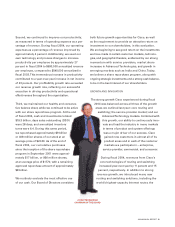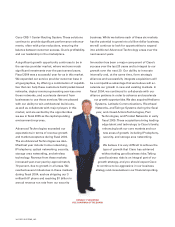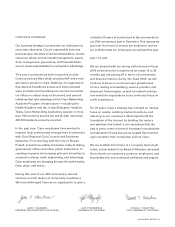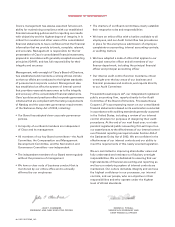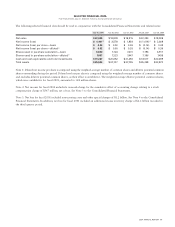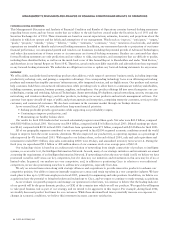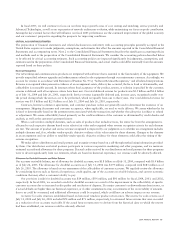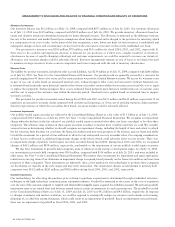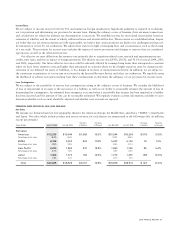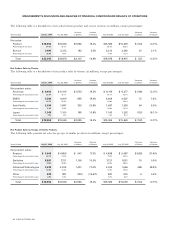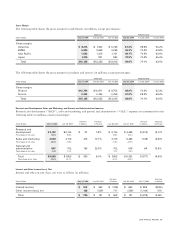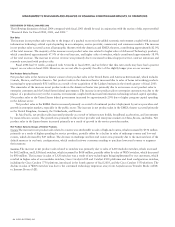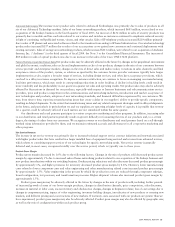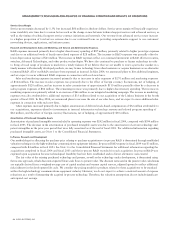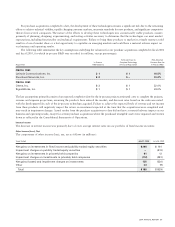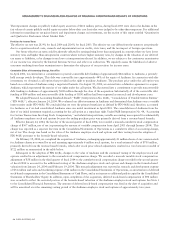Cisco 2004 Annual Report Download - page 15
Download and view the complete annual report
Please find page 15 of the 2004 Cisco annual report below. You can navigate through the pages in the report by either clicking on the pages listed below, or by using the keyword search tool below to find specific information within the annual report.
FORWARD-LOOKING STATEMENTS
This Management’s Discussion and Analysis of Financial Condition and Results of Operations contains forward-looking statements
regarding future events and our future results that are subject to the safe harbors created under the Securities Act of 1933 and the
Securities Exchange Act of 1934. These statements are based on current expectations, estimates, forecasts, and projections about the
industries in which we operate and the beliefs and assumptions of our management. Words such as “expects,” “anticipates,” “targets,”
“goals,” “projects,” “intends,” “plans,” “believes,” “seeks,” “estimates,” “continues,” “may,” variations of such words, and similar
expressions are intended to identify such forward-looking statements. In addition, any statements that refer to projections of our future
financial performance, our anticipated growth and trends in our businesses (including the potential growth of Advanced Technologies),
and other characterizations of future events or circumstances are forward-looking statements. Readers are cautioned that these
forward-looking statements are only predictions and are subject to risks, uncertainties, and assumptions that are difficult to predict,
including those identified below, as well as on the inside back cover of this Annual Report to Shareholders and under “Risk Factors,”
and elsewhere in our Annual Report on Form 10-K. Therefore, actual results may differ materially and adversely from those expressed
in any forward-looking statements. We undertake no obligation to revise or update any forward-looking statements for any reason.
OVERVIEW
We sell scalable, standards-based networking products that address a wide range of customers’ business needs, including improving
productivity, reducing costs, and gaining a competitive advantage. Our corresponding technology focus is on delivering networking
products and systems that simplify customers’ infrastructures, offer integrated services, and are highly secure. Our products and services
help customers build their own network infrastructures while providing tools to allow them to communicate with key stakeholders,
including customers, prospects, business partners, suppliers, and employees. Our product offerings fall into several categories: our core
technologies, routing and switching; Advanced Technologies (home networking, IP telephony, optical networking, security, storage area
networking, and wireless technology); and other products, including our access products and network management software. Our
customer base spans virtually all types of public and private agencies and enterprises, comprising enterprise customers, service provider
customers, and commercial customers. We also have customers in the consumer market through our Linksys division.
As we entered fiscal 2004, we articulated three long-term financial priorities:
• Seeking profitable growth opportunities while supporting our profitability targets;
• Continuing to improve productivity; and
•Maintaining our healthy balance sheet.
Our results for fiscal 2004 indicate that we made substantial progress toward these goals. Net sales were $22.0 billion, compared
with $18.9 billion in fiscal 2003. Net income was $4.4 billion, compared with $3.6 billion in fiscal 2003. Diluted earnings per share
was $0.62, compared with $0.50 in fiscal 2003. Cash flows from operations were $7.1 billion, compared with $5.2 billion for fiscal 2003.
All of our geographic segments contributed to our revenue growth in fiscal 2004 as general economic conditions around the world
began to improve from the recent economic downturn. We also improved our productivity, as operating expenses as a percentage of
sales improved by 4% from fiscal 2003. With regard to our balance sheet, at the end of fiscal 2004, cash and cash equivalents and
investments totaled $19.3 billion, days sales outstanding (DSO) were 28 days, and annualized inventory turns were 6.4. During the
fiscal year, we repurchased $9.1 billion or 408 million shares of our common stock at an average price of $22.30.
Our technology vision is based on an architectural evolution of networking from simple connectivity of products to intelligent
systems, or as we refer to it, the Intelligent Information Network. As such, many of our strategic initiatives and investments are aimed
at meeting the requirements of an Intelligent Information Network. If networking evolves the way we think it will, we believe we have
positioned ourselves well versus our key competitors, but if it does not, our initiatives and investments in this area may be of no or
limited value. In general, our markets are very competitive, and, in addition to positioning Cisco in relation to our traditional
competitors, we are also positioning ourselves to address new competitors, especially from Asia.
We rely on internal innovation along with strategic alliances and acquisitions to provide innovative products to enhance our
competitive position. Our ability to innovate internally requires us to attract and retain top talent in a very competitive industry. We have
made plans to hire up to 1,000 new employees in fiscal 2005, primarily for engineering and sales positions. In addition, we believe our
acquisitions have the potential to bring both talent and technology to Cisco, and we expect to continue to make strategic acquisitions.
As we evaluate our growth prospects and manage our operations for the future, we continue to believe that the leading indicator
of our growth will be the gross domestic product, or GDP, of the countries into which we sell our products. We regard the willingness
to take good business risk as part of our strategy, and we intend to be aggressive in this respect. For example, during fiscal 2004,
we steadily decreased product lead times for our customers. While these shortened lead times potentially increase our exposure to
changes in economic conditions, we believe this investment increases customer satisfaction.
18 CISCO SYSTEMS, INC.
MANAGEMENT’S DISCUSSION AND ANALYSIS OF FINANCIAL CONDITION AND RESULTS OF OPERATIONS



